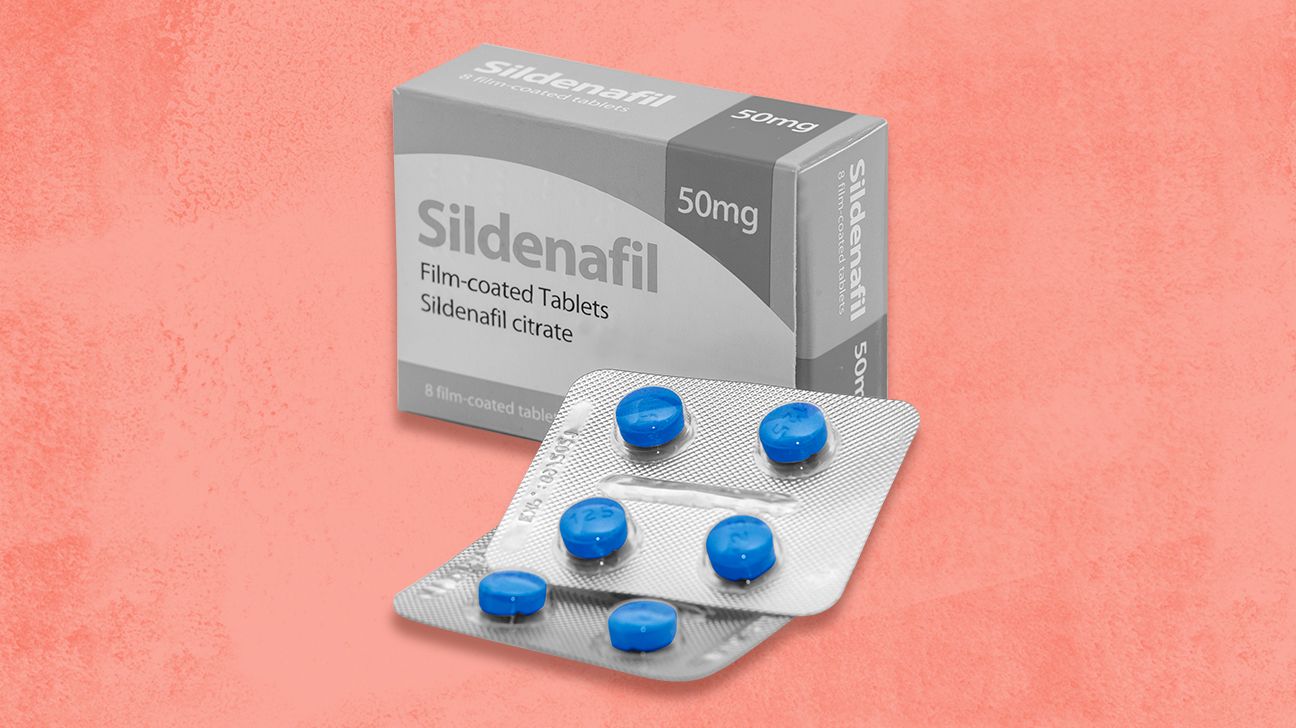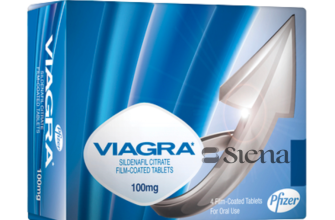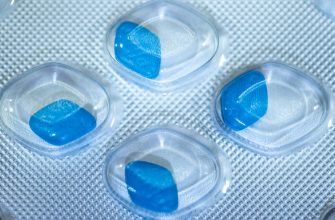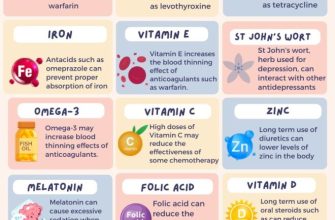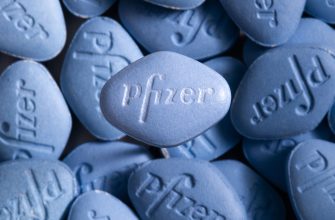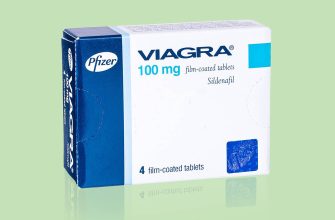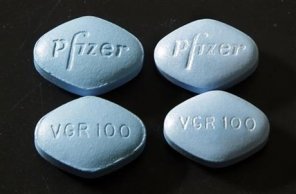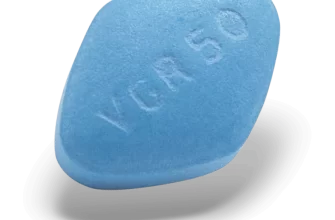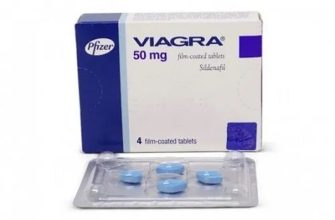The clinical name for Viagra is sildenafil citrate. This is the name used in medical settings and on prescription labels, differentiating it from the brand name Viagra.
Understanding this distinction is crucial. While “Viagra” is the widely recognized brand name, sildenafil citrate refers to the active pharmaceutical ingredient itself. Many generic versions exist, all containing sildenafil citrate as their core component.
Always consult your doctor or pharmacist before using sildenafil citrate or any medication for erectile dysfunction. They can assess your medical history, discuss potential side effects, and recommend the appropriate dosage based on your individual needs. Remember, self-medicating can be risky.
- Clinical Name for Viagra
- Sildenafil Citrate: The Active Ingredient
- Mechanism of Action
- Important Considerations
- Understanding Generic vs. Brand Name Medications
- Active Ingredient: The Key Difference
- Why the Price Difference?
- Factors to Consider
- Finding Generic Alternatives
- In Summary
- Viagra’s Chemical Structure and Function
- PDE5 Inhibition: The Mechanism of Action
- Increased Blood Flow and Erection
- Structural Details and Variations
- Beyond Erectile Dysfunction
- Medical Uses Beyond Erectile Dysfunction
- Treating PAH
- Beyond PAH: Other Applications
- Important Considerations
- Potential Side Effects and Drug Interactions of Sildenafil Citrate
- Common Side Effects
- Less Common but Serious Side Effects
- Drug Interactions
- Disclaimer
- Regulatory Approval and Global Availability of Sildenafil Citrate
Clinical Name for Viagra
The clinical name for Viagra is sildenafil citrate. This is the active ingredient responsible for Viagra’s effects.
Sildenafil citrate belongs to a class of drugs called phosphodiesterase-5 (PDE5) inhibitors. These medications work by increasing blood flow to the penis, facilitating erections.
Prescriptions for sildenafil citrate are typically written under the brand name Viagra, but generic versions also exist. These generic versions contain the same active ingredient and are often more affordable.
Always consult your doctor before using sildenafil citrate or any medication for erectile dysfunction. They can assess your health status and determine if this medication is appropriate for you and discuss potential side effects and interactions with other medications you may be taking.
Remember to follow your doctor’s instructions carefully regarding dosage and frequency of use. Improper use can lead to adverse reactions.
Sildenafil Citrate: The Active Ingredient
Sildenafil citrate is the active pharmaceutical ingredient in Viagra. It’s a phosphodiesterase-5 (PDE5) inhibitor. This means it works by increasing blood flow to the penis, aiding in achieving and maintaining an erection.
Mechanism of Action
Specifically, sildenafil inhibits PDE5, an enzyme that breaks down cyclic guanosine monophosphate (cGMP). Higher cGMP levels relax the smooth muscles in the blood vessels of the penis, allowing more blood to flow in. This process is triggered by sexual stimulation.
Important Considerations
Sildenafil is a prescription medication. Consult your doctor before using it, especially if you have heart problems, high or low blood pressure, or are taking other medications. Potential side effects include headache, flushing, and nasal congestion. Dosage varies depending on individual needs and should be determined by a healthcare professional. Improper use can be dangerous. Always follow prescribed guidelines and seek medical advice if needed.
Understanding Generic vs. Brand Name Medications
Choose generic medications to save money without sacrificing efficacy. They contain the same active ingredient as brand-name drugs and are just as effective.
Active Ingredient: The Key Difference
The core difference lies in the active pharmaceutical ingredient (API). Both generic and brand-name medications use the same API. The FDA rigorously tests generics to confirm identical absorption and bioavailability.
Why the Price Difference?
- Brand-name companies invest heavily in research and development, reflected in higher prices.
- Generics don’t incur these costs, allowing for lower prices.
- Generic manufacturers don’t spend money on marketing and branding.
Factors to Consider
- Efficacy: Generics undergo stringent testing to prove bioequivalence – meaning they work the same way.
- Safety: The FDA approves generics based on rigorous safety standards, ensuring they’re as safe as their brand-name counterparts.
- Cost: Generics are significantly cheaper, making them a more affordable option for patients.
- Availability: Generics are widely available, offering broader access to medication.
Finding Generic Alternatives
Consult your doctor or pharmacist. They can help identify suitable generic equivalents for your prescribed medications and answer any questions you may have. Always follow your doctor’s instructions and take your medication as directed.
In Summary
Generic drugs provide a cost-effective alternative to brand-name medications without compromising quality or safety. Choose generics for significant savings while maintaining the same therapeutic benefit.
Viagra’s Chemical Structure and Function
Viagra, clinically known as sildenafil, contains a pyrazolopyrimidine molecular structure. This structure interacts specifically with an enzyme called phosphodiesterase-5 (PDE5).
PDE5 Inhibition: The Mechanism of Action
Sildenafil inhibits PDE5. This inhibition leads to increased levels of cyclic guanosine monophosphate (cGMP) within smooth muscle cells of the corpus cavernosum (the erectile tissue in the penis). Higher cGMP levels relax these smooth muscles, allowing increased blood flow.
Increased Blood Flow and Erection
The resulting increased blood flow engorges the corpus cavernosum, facilitating an erection. The drug’s effectiveness hinges on sexual stimulation; sildenafil doesn’t cause erections spontaneously.
Structural Details and Variations
Slight structural modifications to sildenafil create variations like vardenafil and tadalafil, each with slightly different PDE5 inhibition profiles and durations of action. These differences influence their clinical applications and side effect profiles.
Beyond Erectile Dysfunction
Note: While primarily known for treating erectile dysfunction, sildenafil demonstrates potential in other areas, such as pulmonary arterial hypertension treatment, due to its effects on blood vessels throughout the body. Further research continues to explore its broader therapeutic uses.
Medical Uses Beyond Erectile Dysfunction
Sildenafil, the active ingredient in Viagra, treats pulmonary arterial hypertension (PAH) – a serious condition causing high blood pressure in the arteries leading to the lungs. This improves exercise capacity and reduces symptoms like shortness of breath.
Treating PAH
Doctors prescribe sildenafil for PAH patients to widen blood vessels, increasing blood flow to the lungs and easing the strain on the heart. Dosage and treatment duration vary depending on individual needs and response. Regular check-ups monitor progress and adjust medication as necessary.
Beyond PAH: Other Applications
Research also explores sildenafil’s potential in other areas. Studies suggest it may help with:
| Condition | Potential Benefit |
|---|---|
| Raynaud’s phenomenon | Improves blood flow to fingers and toes, reducing pain and discomfort during cold episodes. |
| Exercise-induced bronchoconstriction (EIB) | Reduces airway narrowing during exercise in asthma patients. |
| Benign prostatic hyperplasia (BPH) | Shows promise in improving urinary flow, though more research is needed. |
Important Considerations
While sildenafil offers benefits beyond erectile dysfunction, it’s crucial to consult a healthcare professional before use. They’ll assess your individual health profile and determine the suitability and appropriate dosage of sildenafil for your specific needs. Self-medication can be dangerous.
Potential Side Effects and Drug Interactions of Sildenafil Citrate
Sildenafil citrate, the active ingredient in Viagra, generally has a good safety profile, but potential side effects exist. These vary in severity and frequency.
Common Side Effects
- Headache: This is the most frequently reported side effect.
- Facial flushing: A reddening of the skin, particularly on the face and neck.
- Nasal congestion: A stuffy or runny nose.
- Indigestion: Mild stomach upset.
- Visual disturbances: Blurred vision, changes in color perception, or increased light sensitivity are possible.
- Muscle aches: Mild to moderate muscle pain.
These effects are usually mild and temporary. If they persist or worsen, consult a doctor.
Less Common but Serious Side Effects
- Prolonged erection (priapism): A painful erection lasting more than four hours. This requires immediate medical attention.
- Sudden vision loss: Report this immediately to your doctor.
- Sudden hearing loss: Seek immediate medical help if this occurs.
- Heart attack or stroke: Sildenafil may increase the risk in individuals with pre-existing heart conditions. Discuss your health history with your physician before taking it.
The occurrence of these serious side effects is rare. However, awareness of their possibility is important.
Drug Interactions
Sildenafil can interact negatively with certain medications. It’s crucial to inform your doctor of all medications you’re taking, including over-the-counter drugs and herbal supplements. Significant interactions include:
- Nitrates: Combining sildenafil with nitrates (used to treat angina) can cause a dangerous drop in blood pressure.
- Alpha-blockers: These medications, often used to treat high blood pressure, can lead to hypotension when taken with sildenafil.
- CYP3A4 inhibitors: These medications can increase sildenafil levels in the body, potentially increasing the risk of side effects. Examples include ketoconazole and erythromycin.
- CYP3A4 inducers: These medications can reduce sildenafil levels, potentially reducing its effectiveness. Examples include rifampin and St. John’s wort.
Disclaimer
This information is for educational purposes only and does not constitute medical advice. Always consult your doctor or pharmacist before starting any new medication, including sildenafil citrate.
Regulatory Approval and Global Availability of Sildenafil Citrate
Sildenafil citrate, sold under the brand name Viagra among others, received approval from the U.S. Food and Drug Administration (FDA) in March 1998 for the treatment of erectile dysfunction. This paved the way for its widespread availability in the United States.
Subsequent approvals followed in many other countries. The European Medicines Agency (EMA) granted marketing authorization in 1998. Approvals in Canada, Australia, and numerous other nations quickly followed, leading to global distribution.
However, access varies. Generic versions of sildenafil citrate are widely available and generally more affordable, increasing accessibility in many regions. Nevertheless, factors such as regulatory processes, healthcare systems, and local pricing policies influence availability and cost in individual countries. Patent expirations significantly impacted global pricing, increasing competition and lowering the cost of treatment.
Note: Specific approval dates and market entry details may vary depending on the country and specific formulation of sildenafil citrate. Consult your local healthcare authority for precise details regarding availability and regulation in your area. Always obtain medication from a reputable source.
Key Considerations for Patients: Always discuss the use of sildenafil citrate with your doctor to ensure its suitability and to manage potential side effects. Do not obtain medications from unregulated sources. Your doctor can provide personalized recommendations based on your health status.

